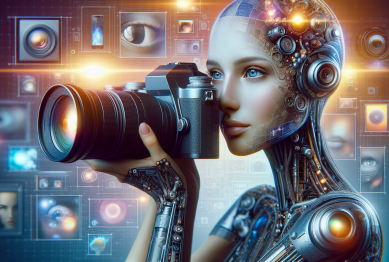From thermostats that adjust themselves to smart speakers that respond before you finish a sentence, smart devices are no longer just tools—they’re observers. What many users don’t realize is that smart devices are learning your habits every time you use them. This is not just about voice commands or automation. These systems are evolving, adapting, and—most critically—watching.
In today’s connected homes, workplaces, and classrooms, understanding how smart devices are learning your habits is essential. Not only is it reshaping how we interact with technology, it’s also raising important questions about data privacy, ethics, and control.

How Smart Devices Are Learning Your Habits Through Ambient Intelligence
Smart devices have graduated from being reactive tools to becoming predictive assistants. This shift is powered by a field called ambient intelligence (AmI)—a blend of AI, machine learning, and IoT (Internet of Things) that enables devices to interpret and adapt to human behavior in real-time.
According to a report by Gartner, over 70% of households in developed countries now contain at least one smart device with ambient learning capabilities (Gartner, 2023). These devices include:
- Smart thermostats (e.g., Nest)
- Smart speakers (e.g., Alexa, Google Home)
- Smart TVs and media players
- Wearables like Apple Watch or Fitbit
- Smart home cameras and security systems
Each of these tools collects data passively, building a behavioral profile that gets sharper every day.
What Smart Devices Learn While Tracking Your Habits
The learning process focuses on predictive behavior mapping, which involves identifying patterns to anticipate user actions. Here’s what your devices may be quietly observing:
1. Daily Usage Patterns That Smart Devices Use to Learn Your Habits
Your smart coffee machine knows when you wake up. Your smart lights know when you leave the house. Over time, devices build a timeline of your daily activities to optimize themselves.
2. How Voice Data Helps Smart Devices Learn Your Habits
Smart speakers constantly process not just what you say, but how you say it. They adjust to slang, accent, tone, and even emotion, improving both recognition and response (Amazon Science, 2022).
3. How Location Data Contributes to Smart Devices Learning Your Habits
Geo-fencing allows devices to detect when you’re approaching or leaving home, triggering actions like turning on lights or locking doors. This also feeds data into learning loops.
4. Media and Content Preferences
Smart TVs and assistants track what you watch, when you watch, and how long you stay engaged. This data is used to personalize recommendations and even adjust volume or lighting based on preferences.
The Technology Behind How Smart Devices Are Learning Your Habits
Machine Learning in Practice
Smart devices use machine learning models to identify patterns in data. These models are trained on massive datasets, including your personal data, to recognize behavioral trends. For example, Nest thermostats use Bayesian algorithms to predict preferred temperature settings (Nest Learning Thermostat Technical Guide, 2021).
Natural Language Processing (NLP)
Smart assistants rely on NLP to understand human speech. Over time, they refine their accuracy by “learning” from your corrections, repeated commands, and sentence structure. Every interaction helps the system better understand your communication style.
Edge Computing
Some devices now process data locally (on-device) instead of in the cloud. This means your habits are being learned without constant internet access, which enhances privacy—but also means the device becomes more powerful and independent over time.
How Smart Devices Learning Your Habits Impacts Society and Education
Changing Classrooms
In education, AI-enabled platforms like Duolingo and Coursera are personalizing learning experiences by tracking how fast students complete tasks, what they skip, and where they struggle. This data-driven personalization is reshaping educational strategies worldwide (EdTech Magazine, 2023).
Smart Workplaces
In offices, smart assistants and cameras are being used to monitor workflow, meeting efficiency, and even employee moods. While this can boost productivity, it also blurs the line between helpful monitoring and invasive surveillance.
The Privacy Risks of How Smart Devices Are Learning Your Hab
As smart devices become more embedded in daily life, concerns over data privacy and ethical design are growing.
- Consent Ambiguity: Many devices operate with opt-out privacy policies, meaning they assume consent until you say otherwise.
- Third-Party Sharing: Data collected by your smart fridge may be sold to marketers or insurers. This raises concerns about how deeply corporations should be allowed into your personal life.
- Algorithmic Bias: When devices “learn” from biased datasets, their decisions can reflect and reinforce societal inequalities.
According to the Electronic Frontier Foundation (EFF), many smart home platforms lack adequate transparency in how data is processed and stored (EFF, 2022). As learning algorithms grow more powerful, the need for regulation is more urgent than ever.
How to Manage What Smart Devices Learn From Your Habits
Absolutely. Here are some ways to regain control:
1. Audit Your Device Permissions
Regularly check what data your devices are collecting. Most apps and systems offer dashboards for managing permissions.
2. Disable Passive Listening
If you’re not using voice commands regularly, consider disabling always-on microphones in your smart speaker or TV.
3. Opt for Local Processing
Choose devices with strong edge computing capabilities, which limit cloud dependency and keep your data on your network.
4. Use Encrypted Networks
Make sure your home Wi-Fi is secure, and use VPNs for added protection.
5. Stay Informed
Read privacy policies (yes, actually read them), follow tech news, and support transparency-driven brands.
Final Thoughts
Smart devices are no longer just reacting to our input—they’re predicting, adapting, and in many cases, anticipating our needs. Understanding how smart devices are learning your habits is essential not only for optimizing convenience but also for maintaining autonomy in a world increasingly shaped by invisible algorithms.
We’re not being spied on maliciously by machines—but we are being watched. The smarter our devices become, the more intentional we need to be about what we allow them to learn.
References
- Gartner. (2023). Market Guide for Smart Home Technologies. https://www.gartner.com/en/articles/what-s-new-in-the-2023-gartner-hype-cycle-for-emerging-technologies
- Nest. (2021). Nest Learning Thermostat Technical Guide. https://nest.com/support/images/misc-nest-thermostat/nest-thermostat-gen3-install-guide-US.pdf
- Electronic Frontier Foundation. (2022). Smart Home, Stupid Privacy. https://www.eff.org/deeplinks/2018/08/telling-truth-about-defects-technology-should-never-ever-ever-be-illegal-ever









